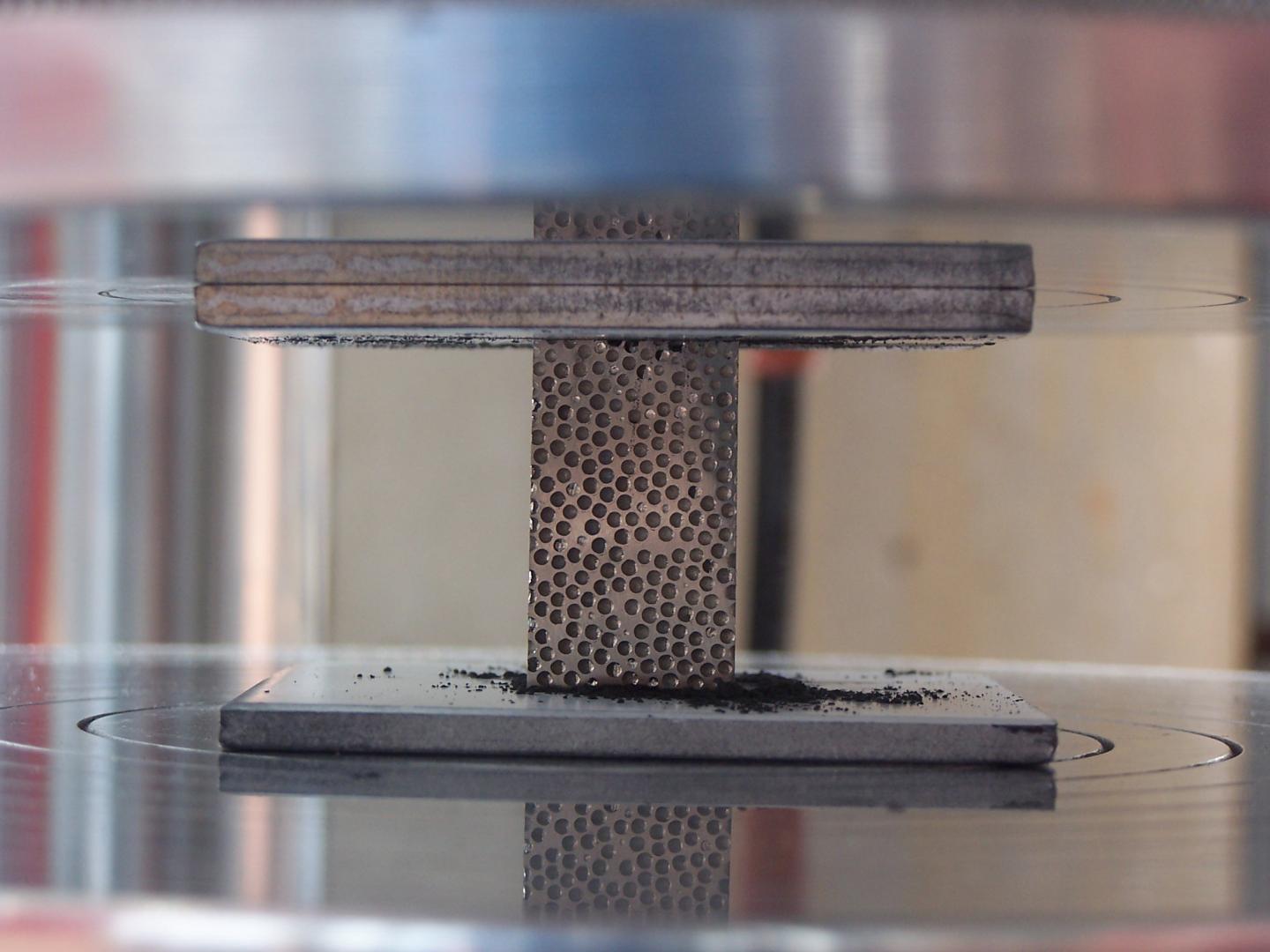One of the biggest problems in dealing with nuclear materials is the need to shield humans from the deleterious effects of nuclear radiation. Radioactive substances emit fast electrons referred to as beta particles, nuclei of helium atoms referred to alpha particles, neutrons and powerful photons referred to as gamma radiation. Alpha particles can be blocked by a sheet of paper and a few millimeters of aluminum can block beta particles. Blocking gamma rays, x-rays and neutrons are more difficult. Different radiations sources emit different mixes of particles with different energy spectra. Lead, steel, concrete, earth and water have all be used to prevent the escape of nuclear radiation from nuclear explosions, radioactive materials, nuclear fuel, nuclear reactors and nuclear waste. These existing shielding materials are bulky, dense and some are toxic. A lighter weight effective radiation shielding material would have many useful applications.
At North Carolina State University, they are working with lightweight composite metals foams. These materials were originally developed for transportation and military applications. They are light weight and able to resist impacts well which are ideal for use in vehicles. Afsaheh Rabiei, one of the researchers working at NCSU on the foams wondered if the new materials could be of use in nuclear applications. Rabiei conducted a number of tests to see if the foam could shield against X-rays, gamma rays and neutrons. The tests utilized something called "areal" density which means that the different samples of shielding materials all had the same weight but did vary in density.
The best performing metal foam material is called "high-Z steel-steel. It is mostly stainless steel but does have a little tungsten added. They changed the structure of the foam so that foam that incorporated tungsten was no denser than the foam that was made of only stainless steel. Because different nuclear materials emit gamma rays with different energy levels, tests were conducted with several different gamma ray sources.
While the high-Z foam was comparable to conventional bulk shielding materials at blocking high energy gamma rays, it was superior to the bulk materials at blocking low energy gamma rays. The high-Z foam was better than other test materials at blocking neutrons. The high-Z materials was better at blocking X-rays than most of the other test materials but not quite as good as lead. The lab at NCSU is working on modifying the high-Z foam to match the X-ray shielding capabilities of lead and early results of that work are encouraging.
One of the big advantages of the new metal foams are that they are composed of non-toxic metals. This means that they will be easier to work with and to dispose of than current shielding materials such as lead which are highly toxic. These new metal foams show great promise for diverse applications such as structural components for nuclear reactors, nuclear medical equipment such as CT scanners and transportation of radioactive materials. Their mechanical and thermal properties also make them good candidates for space exploration because they can withstand high energy impacts, they are strong structural materials and they can shield against radiation found in space.
